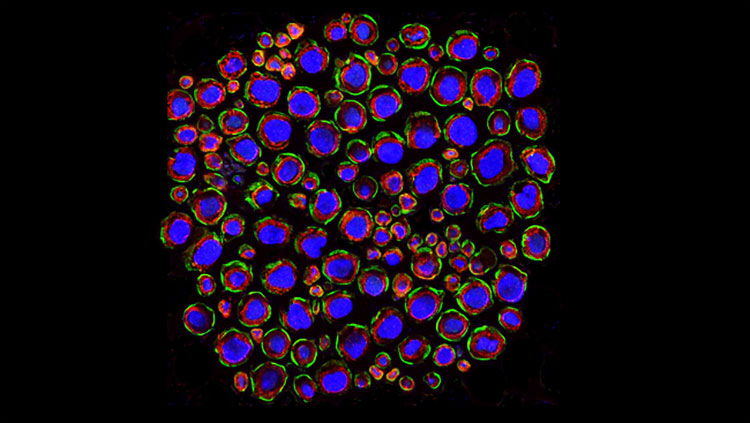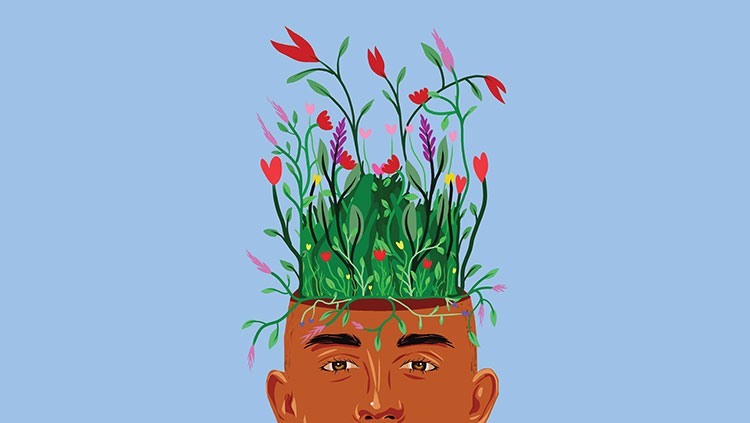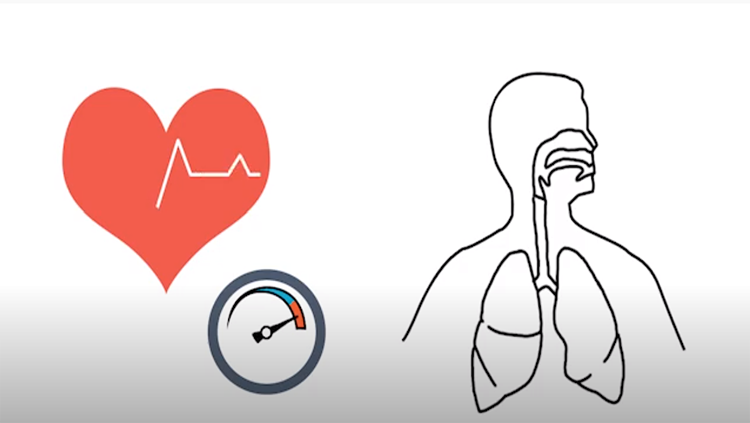Hormones and the Brain: The End of Adolescence
- Published14 Jan 2016
- Reviewed14 Jan 2016
- Author Matthew Davis
- Source BrainFacts/SfN

Over the past few decades, scientists have learned that the hormone surge of adolescence kicks off more than just a spike in moodiness and an increased appetite for novel — and often risky — experiences. A range of studies in both humans and animals indicate that rising levels of estrogen and testosterone also play a role in the development of critical brain hardware. For example, they stimulate the growth of axons — the long fibers neurons use to communicate — and help shape the development of the myelin sheath, the fatty coating that protects axons and speeds up neural signaling.
“The scientific evidence to date supports the idea that during adolescence, the brain is highly receptive to the organizing effects of estrogen and testosterone,” says Cheryl Sisk, a neuroscientist at Michigan State University who studies how pubertal hormones shape the brain. “But the evidence also suggests that, eventually, that developmental window is closed or at least partially shut.”
However, emerging evidence indicates that this brain development window lasts longer than previously thought, extending beyond the teenage years, and that the influence of estrogen and testosterone continues during this time.
Extended Adolescence
Studies using functional magnetic resonance imaging (fMRI) provide evidence of this extended adolescence. One important finding indicates that myelination is still occurring in the brain of a typical 20-year-old. Myelination is a process in which nerve fibers are enveloped in a fatty white sheath (myelin) that greatly accelerates signaling across the brain. Most telling, these studies show that the prefrontal cortex, an area of the brain essential for complex thought processes, decision-making, and social behavioral control, is still a work in progress. It has yet to gain all of the connections likely required to moderate the powerful emotions coming from the more developed amygdala.
“I think it’s clear that the brain is still undergoing significant development until we are at least 25 years old,” says Jay Giedd, a professor of psychiatry at the University of California, San Diego, who has helped pioneer the use of fMRI to chart adolescent brain development. “When the teenage years are over, the brain is still not yet in full possession of all of the neurological features critical to processing emotional responses, making decisions, and controlling impulsive behavior.”
For example, Giedd’s work has revealed that the dorsal lateral section of the prefrontal cortex, thought to be particularly important for impulse control, does not fully mature until the early 20s or later.
While not the only factors at play, estrogen and testosterone are important both for the production of myelin and for other cellular processes that complete the development of the prefrontal cortex and consolidate its linkages with the rest of the brain.
Closing the Window of Development
While the age range of adolescence may need to be revised upward, this period of brain development does not continue indefinitely. Evidence from both Giedd’s and Sisk’s research, along with that of several others, still affirms the idea that “brain plasticity” declines sharply in adulthood. What that means is that after we reach adulthood, the brain’s capacity to lay down new circuits and connections — its ability to be molded like plastic — is severely diminished. Neurologists note that it is this lost plasticity that explains why it can be harder for adults to acquire new skills, like learning a language or playing a musical instrument. And there is evidence that part of this drop-off in plasticity involves a decreased sensitivity to the brain-building powers of estrogen and testosterone.
Evidence of this decreased sensitivity comes from studies of people with a rare abnormality that blocks the normal pubertal increase in estrogen and testosterone. Researchers have found that patients who do not receive hormone supplements until their 20s show permanent deficiencies in brain regions involved in social skills and spatial reasoning.
Similarly, studies in hamsters have revealed that males that have been deprived of testosterone and other hormones as adolescents fail to fully develop typical mating behavior. They are much less likely than normal males to mate with receptive females, even after being prodded with high doses of testosterone as adults.
Frances Jensen, chair of the Neurology Department at the University of Pennsylvania, says neurologists are intensely focused on teens and young adults because the evidence keeps accumulating that this is such an important — and time-limited — period for brain development.
But on the positive side, Jensen says the fact that scientists can now show that significant aspects of brain development continue into our mid-20s may give comfort to parents who are worried about the fact that their 19-year-old still seems to be very much a work in progress.
“I always say ‘bring on the late bloomers,’” she says, “because there is a biological reason to assume that there is a little bit of the late bloomer in all of us.
CONTENT PROVIDED BY
BrainFacts/SfN
References
Giedd, JN. Structural magnetic resonance imaging of the adolescent brain. Annals of the New York Academy of Sciences. 1021: 77-85 (2004).
Hajszan T, MacLusky NJ, Leranth C. Role of androgens and the androgen receptor in remodeling of spine synapses in limbic brain areas. Hormones and Behavior. 53.5: 638–646 (2008).
Jensen FE, Nutt, AE. “The Teenage Brain: A Neuroscientist’s Survival Guide to Raising Adolescents and Young Adults.” HarperCollins (2015).
Kolb B, Mychasiuk R, Muhammad A, Li Y, Frost DO, et al. Experience and the developing Prefrontal Cortex. Proceedings of the National Academy of Sciences. 09.Suppl 2. 17186–17193 (2012).
Koolschijn PCMP, Peper JS, Crone EA. The influence of sex steroids on structural brain maturation in sdolescence. PLOS ONE 9(1):e83929 (2014).
Perrin JS, Hervé PY, Leonard G, Perron M, Pike GB, et al. Growth of white matter in the adolescent brain: Role of testosterone and androgen receptors. Journal of Neuroscience. 28(38): 9519-9524 (2008).
Perry AN, Westenbroek C, Becker JB. Impact of pubertal and adult estradiol treatments on cocaine self-administration. Hormones and Behavior. 64(4): 573-8 (2013).
Schulz KM, Zehr JL, Salas-Ramirez, KY, Sisk CL. Testosterone programs adult social behavior before and during, but not after, adolescence. Endocrinology. 150(8):3690-3698 (2009).
Sisk CL, Zehr, JK. Pubertal hormones organize the adolescent brain and behavior. Frontiers of Neuroendocrinology. (3-4):163-74 (2005).
Sturman DA, Moghaddam B. The Neurobiology of Adolescence: Changes in brain architecture, functional dynamics, and behavioral tendencies. Neuroscience and Biobehavioral Reviews. 35(8):1704-1712 (2011).
Also In Childhood & Adolescence
Trending
Popular articles on BrainFacts.org


















